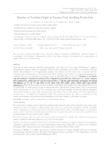Por favor, use este identificador para citar o enlazar este ítem:
http://www.alice.cnptia.embrapa.br/alice/handle/doc/1069467Registro completo de metadatos
| Campo DC | Valor | Lengua/Idioma |
|---|---|---|
| dc.contributor.author | BARROS, D. L. | pt_BR |
| dc.contributor.author | REZENDE, F. A. de | pt_BR |
| dc.contributor.author | CAMPOS, A. T. | pt_BR |
| dc.contributor.author | MAIA, C. M. B. de F. | pt_BR |
| dc.date.accessioned | 2017-05-10T11:11:11Z | pt_BR |
| dc.date.available | 2017-05-10T11:11:11Z | pt_BR |
| dc.date.created | 2017-05-10 | pt_BR |
| dc.date.issued | 2017 | pt_BR |
| dc.identifier.citation | Journal of Agricultural Science, v. 9, n. 5, p. 200-207, abr. 2017. | pt_BR |
| dc.identifier.uri | http://www.alice.cnptia.embrapa.br/alice/handle/doc/1069467 | pt_BR |
| dc.description | Great part of solid waste are deposited inappropriately near cities or in rural areas, contributing to negative environmental impacts. There are numerous forms of waste processing, one of them is pyrolysis to produce biochar and subsequent use in agricultural systems. The objective of this study was to evaluate different substrates with activated biochar (AB) and biochar (B) in substrate and its effect on the growth of passion fruit seedlings. The test was conducted in a nursery, located in Sinop/MT, May to July 2013, designed in four blocks with ten treatments: commercial substrate (CS), composed by pine bark and vermiculite 4:1; nursery substrate (NS) composed by carbonized rice husk and coconut fiber 1:1; and the eigth treatments represented were B and AB additions of 25; 50; 75; and 100% in CS, (B25, B50, B75, B100, AB25, AB50, AB75 and AB100, respectively). After 60 days sowing the stem diameter, plant height, leaf number was evaluated and at the end of the experiment the fresh and dry weight of shoots and roots, and Dickson Quality Index (DQI) were assessed. AB at concentrations of 25, 50 and 75% combined with commercial substrate showed increases in parameters fresh and dry biomass weight, height, stem diameter and number of leaves. The dose of 25% AB is presented as the best dose to be adopted in commercial crops. The sawdust processed into AB is an alternative in the production of passion fruit system and the reintegration of this raw material to the productive sector. | pt_BR |
| dc.language.iso | eng | eng |
| dc.rights | openAccess | eng |
| dc.subject | Pyrogenic carbon | pt_BR |
| dc.subject | Waste recovery | pt_BR |
| dc.subject | Wood industry residues | pt_BR |
| dc.title | Biochar of sawdust origin in passion fruit seedling production. | pt_BR |
| dc.type | Artigo de periódico | pt_BR |
| dc.date.updated | 2017-05-30T11:11:11Z | pt_BR |
| dc.subject.nalthesaurus | biochar | pt_BR |
| riaa.ainfo.id | 1069467 | pt_BR |
| riaa.ainfo.lastupdate | 2017-05-30 | pt_BR |
| dc.identifier.doi | https://doi.org/10.5539/jas.v9n5p200 | pt_BR |
| dc.contributor.institution | UNIVERSIDADE FEDERAL DE LAVRAS; FABIANA ABREU DE REZENDE, CPAMT; INSTITUTO FEDERAL DE RORAIMA; CLAUDIA MARIA BRANCO DE F MAIA, CNPF. | pt_BR |
| Aparece en las colecciones: | Artigo em periódico indexado (CNPF)  | |
Ficheros en este ítem:
| Fichero | Descripción | Tamaño | Formato | |
|---|---|---|---|---|
| Barros2017.pdf | 606,28 kB | Adobe PDF |  Visualizar/Abrir |









